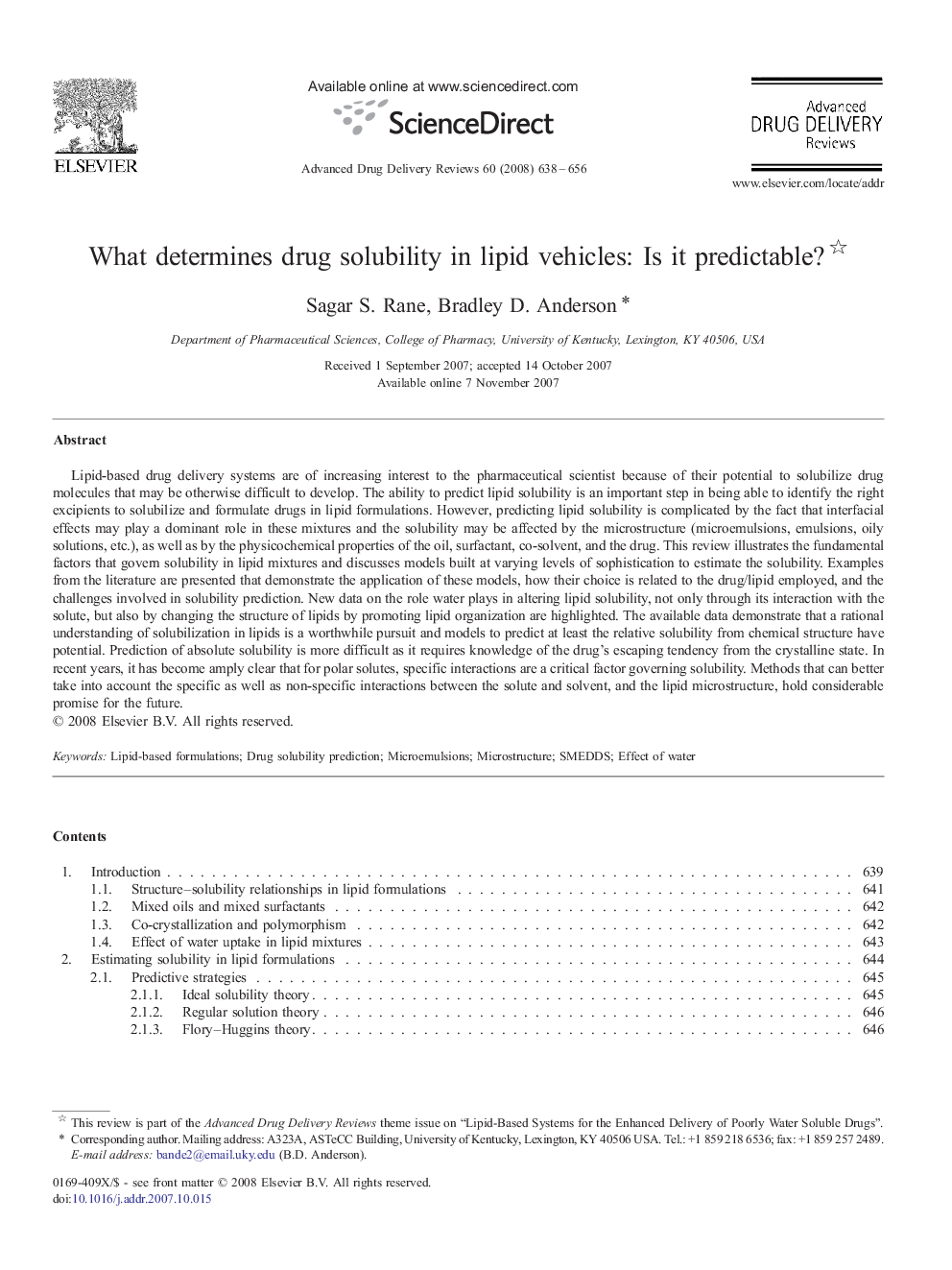| Article ID | Journal | Published Year | Pages | File Type |
|---|---|---|---|---|
| 2071654 | Advanced Drug Delivery Reviews | 2008 | 19 Pages |
Lipid-based drug delivery systems are of increasing interest to the pharmaceutical scientist because of their potential to solubilize drug molecules that may be otherwise difficult to develop. The ability to predict lipid solubility is an important step in being able to identify the right excipients to solubilize and formulate drugs in lipid formulations. However, predicting lipid solubility is complicated by the fact that interfacial effects may play a dominant role in these mixtures and the solubility may be affected by the microstructure (microemulsions, emulsions, oily solutions, etc.), as well as by the physicochemical properties of the oil, surfactant, co-solvent, and the drug. This review illustrates the fundamental factors that govern solubility in lipid mixtures and discusses models built at varying levels of sophistication to estimate the solubility. Examples from the literature are presented that demonstrate the application of these models, how their choice is related to the drug/lipid employed, and the challenges involved in solubility prediction. New data on the role water plays in altering lipid solubility, not only through its interaction with the solute, but also by changing the structure of lipids by promoting lipid organization are highlighted. The available data demonstrate that a rational understanding of solubilization in lipids is a worthwhile pursuit and models to predict at least the relative solubility from chemical structure have potential. Prediction of absolute solubility is more difficult as it requires knowledge of the drug's escaping tendency from the crystalline state. In recent years, it has become amply clear that for polar solutes, specific interactions are a critical factor governing solubility. Methods that can better take into account the specific as well as non-specific interactions between the solute and solvent, and the lipid microstructure, hold considerable promise for the future.
